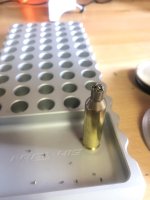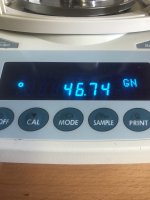So this is one of the most fascinating threads on SH in a while.
OP, sorry about your friend's rifle and glad he is Ok. If I am right in my reading and he has subsequently posted here.... thanks for sharing the info.
So I have a question sort of related to all this...
I am just starting to reload for .338 LM and will be loading Badlands Precision 250 GR solids after I run some fireforming rounds. Working off Data in the 2021 Hornady reloading manual... most recent edition. And for my first 'fireforming' rounds my charges are well below max. So I am not worried about these first loads.
However, after the brass is fireformed... I am going to be loading the Badlands solids.
This is the first time I've loaded monolithics. That said, I have loaded 'solids' in large 'African' Calibers (.458 Mag, .416 Taylor and .470 Capstick...). But these cartridges are a far cry from the pressures of a .338 LM or some of the other new high-pressure cartridges this thread is discussing. There is also 'published' data for African 'solids' in most of these calibers as they date back decades. And solids are commonly in use in those cartridges. But it appears that 'solids' are not monolithics!
And so (despite being a pretty experienced reloader -- who is learning all the time)... I have some questions as I get into the new realm of .338 and monos.
I am interested in several posts in this thread indicating that the 'small bore' monolithics (and I presume that includes my .338) are generating significantly higher pressures than their jacketed counterparts of the same grain weight. And don't want to overcharge, even if I am not likely to go to maximum published loads. Also, I will have to check my new reloading manual, but I don't think it even has data for monolithics!
So is there a source or a formula that helps work out the charge for solids vs. jacketed rounds? Is there a specific loading manual or trustworthy Internet source? Should I start using a database or program like QuickLoad that I see above? Is there a thread here that I have not seen on Monos?
Obviously, this is new territory for my loading... and there is always more to learn. And blowed up guns are not something I want to experience. So any input or direction from folks here is much appreciated. Thanks
@orkan and
@Hoplite Arms Ammunition as well.
Cheers,
Sirhr




